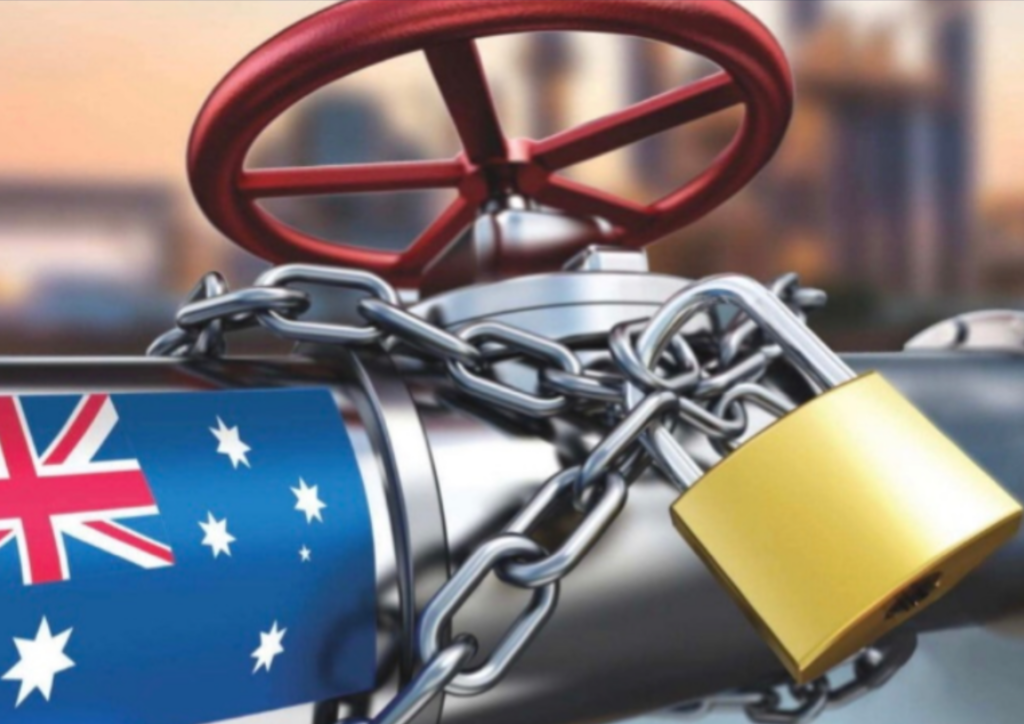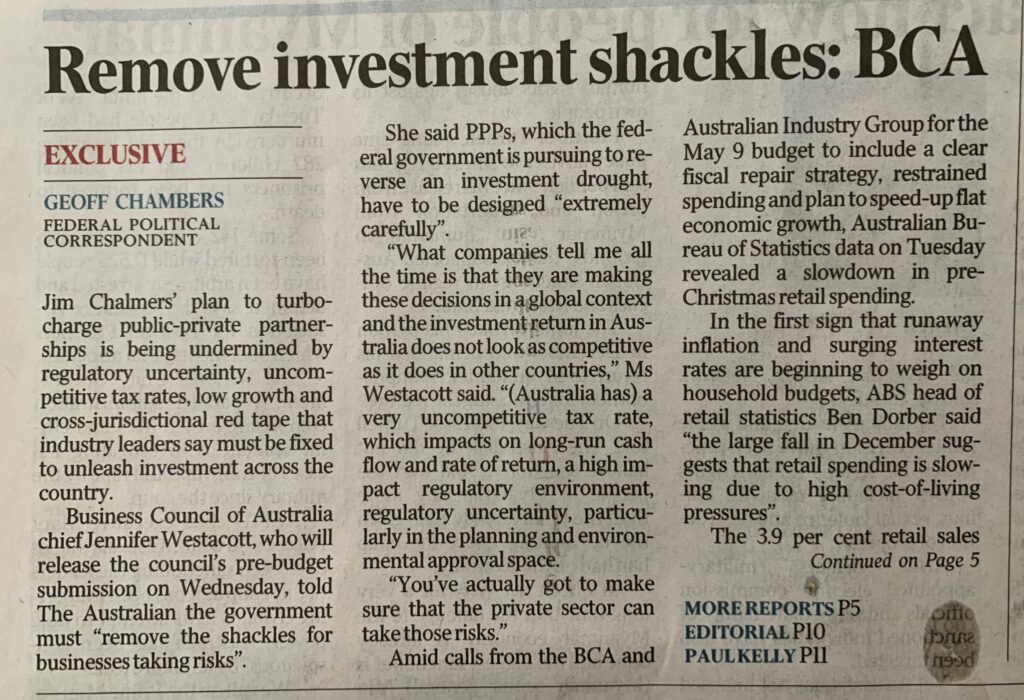
Article by Geoff Chambers courtesy of the Australian.

Jim Chalmers’ plan to turbocharge public-private partnerships is being undermined by regulatory uncertainty, uncompetitive tax rates, low growth and cross-jurisdictional red tape that industry leaders say must be fixed to unleash investment across the country.
Business Council of Australia chief Jennifer Westacott, who will release the council’s pre-budget submission on Wednesday, told The Australian the government must “remove the shackles for businesses taking risks”.
She said PPPs, which the federal government is pursuing to reverse an investment drought, have to be designed “extremely carefully”.
“What companies tell me all the time is that they are making these decisions in a global context and the investment return in Australia does not look as competitive as it does in other countries,” Ms Westacott said. “(Australia has) a very uncompetitive tax rate, which impacts on long-run cash flow and rate of return, a high impact regulatory environment, regulatory uncertainty, particularly in the planning and environmental approval space.
“You’ve actually got to make sure that the private sector can take those risks.”
Amid calls from the BCA and Australian Industry Group for the May 9 budget to include a clear fiscal repair strategy, restrained spending and plan to speed-up flat economic growth, Australian Bureau of Statistics data on Tuesday revealed a slowdown in pre-Christmas retail spending.
In the first sign that runaway inflation and surging interest rates are beginning to weigh on household budgets, ABS head of retail statistics Ben Dorber said “the large fall in December suggests that retail spending is slowing due to high cost-of-living pressures”.
The 3.9 per cent retail sales slowdown, the first monthly fall in 2022, is unlikely to stop the Reserve Bank board handing down a ninth straight cash rate hike on Tuesday.
Ms Westacott, who urged against “rewriting” the market-based system in response to the Treasurer’s 6000-word essay in The Monthly promoting values-based capitalism, said his co-investment push in pursuit of decarbonisation, digitisation and new industries must be backed by regulatory and tax reforms.
“We would still argue that the most important thing that government can do is to create the macro-economic circumstances for companies to invest and remove the risk from investment,” she said.
“Co-investment without fixing the disincentive to invest is not going to get you the scale of new industry formation because we don’t have a big enough market to make some of those sums add up. Government intervention in the form of price capping or directing investment flows … has never worked and it’s not going to work.”
Speaking to The Conversation, following mixed reviews of his Capitalism after the crises essay, Dr Chalmers singled out clean energy, modern manufacturing and housing as top co-investment priorities.
He said he wasn’t “arguing for heavy-handed government intervention” but rather investment opportunities backed by Labor’s Clean Energy Finance Corporation, Rewiring the Nation, National Reconstruction and Housing Australia Future funds.
“(It’s) how we recognise this opportunity to get public and private sectors working together, investing in areas where we haven’t seen enough investment but where investment now will deliver big economic gains and opportunities into the future,” he said.
“All I’m arguing for … is a way of lining up our values with our economy and with our budget in a way that sees the public sector and the private sector roles recognised – very different roles, but working together to deliver on some of these objectives that we all share.” Dr Chalmers said Anthony Albanese “was very kind with his feedback” when he showed the essay to the Prime Minister in December: “He said he enjoyed it and encouraged it and said it was a good piece.”
The BCA submission calls for an end to pandemic-era government intervention, new fiscal rules overseen by an independent authority to control spending and a long-term strategy to return the budget to surplus.
A blueprint, lifting forecast economic growth above 1.5 per cent, would be supported by a broad-based, permanent investment allowance, getting more Australians trained and into the workforce and removing regulatory barriers.
AiGroup’s submission said the budget should “back the expansion of Australia’s productive capacity and support monetary policy to avoid a debilitating price-wage spiral”.
In response to economy-wide labour shortages, both groups want the migration intake target lifted to 220,000, with two-thirds allocated to skilled workers.
AiGroup chief executive Innes Willox said the budget must “contribute to the macroeconomic challenge of returning annual inflation to the target band of 2 to 3 per cent over the next couple of years while keeping the economy on a growth path”.

